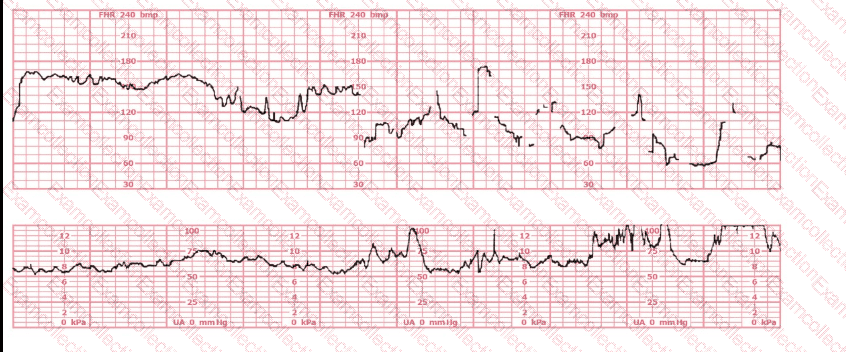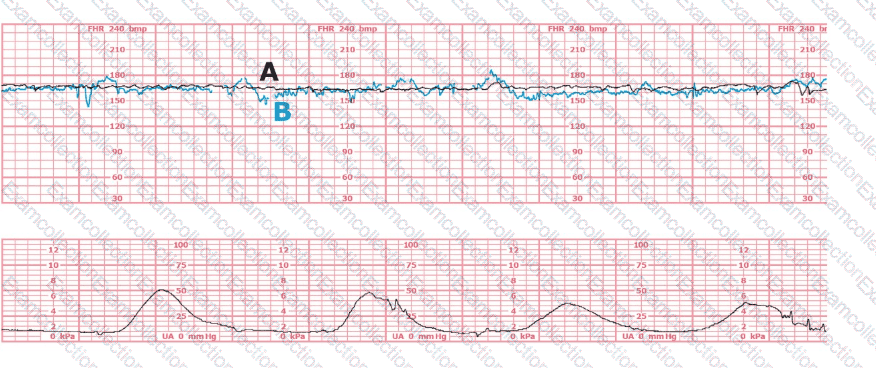Comprehensive and Detailed Explanation From Exact Extract–Based NCC C-EFM References:
The tracing shows a clear relationship between uterine activity and fetal heart rate changes:
The uterine activity strip demonstrates very frequent contractions with little resting time between them, exceeding five contractions in 10 minutes, averaged over a 30-minute window.
NCC and NICHD define tachysystole as “more than 5 contractions in 10 minutes, averaged over 30 minutes, regardless of whether the labor is spontaneous or stimulated.â€
As uterine activity intensifies and becomes excessively frequent, the fetal heart rate strip begins to show:
Progressive decrease in baseline
Recurrent decelerations with gradual onset and recovery
Reduced variability in the latter portion of the strip
This pattern is consistent with uteroplacental insufficiency caused by excessive uterine activity (tachysystole). NCC and AWHONN emphasize that tachysystole can result in decreased uterine blood flow and fetal oxygenation, leading to late or prolonged decelerations and eventual bradycardia if not corrected.
Why the other options are less likely:
A. Placental abruptionTypically associated with maternal symptoms (pain, vaginal bleeding, firm/boardlike uterus) and often a sustained increase in resting tone or a hypertonic contraction, not simply very frequent contractions. These maternal findings are not described in the vignette.
B. Rapid fetal descentUsually causes variable or early decelerations related to head compression, but the tocodynamometer would not necessarily show this degree of contraction frequency. The lower strip here clearly highlights excessive contractions as the primary problem.
Thus, the tracing’s FHR abnormalities are best explained by tachysystole, making C. Tachysystole the most appropriate answer.
[References:NCC C-EFM Candidate Guide (2025); NCC Content Outline – Pattern Recognition and Intervention; NICHD Three-Tier FHR Interpretation System; AWHONN Fetal Heart Monitoring Principles & Practices; Miller’s Fetal Monitoring Pocket Guide; Menihan Electronic Fetal Monitoring; Simpson & Creehan Perinatal Nursing; Creasy & Resnik Maternal–Fetal Medicine., , ]






